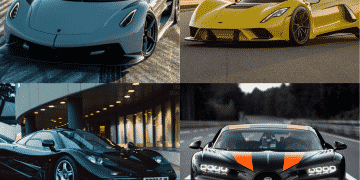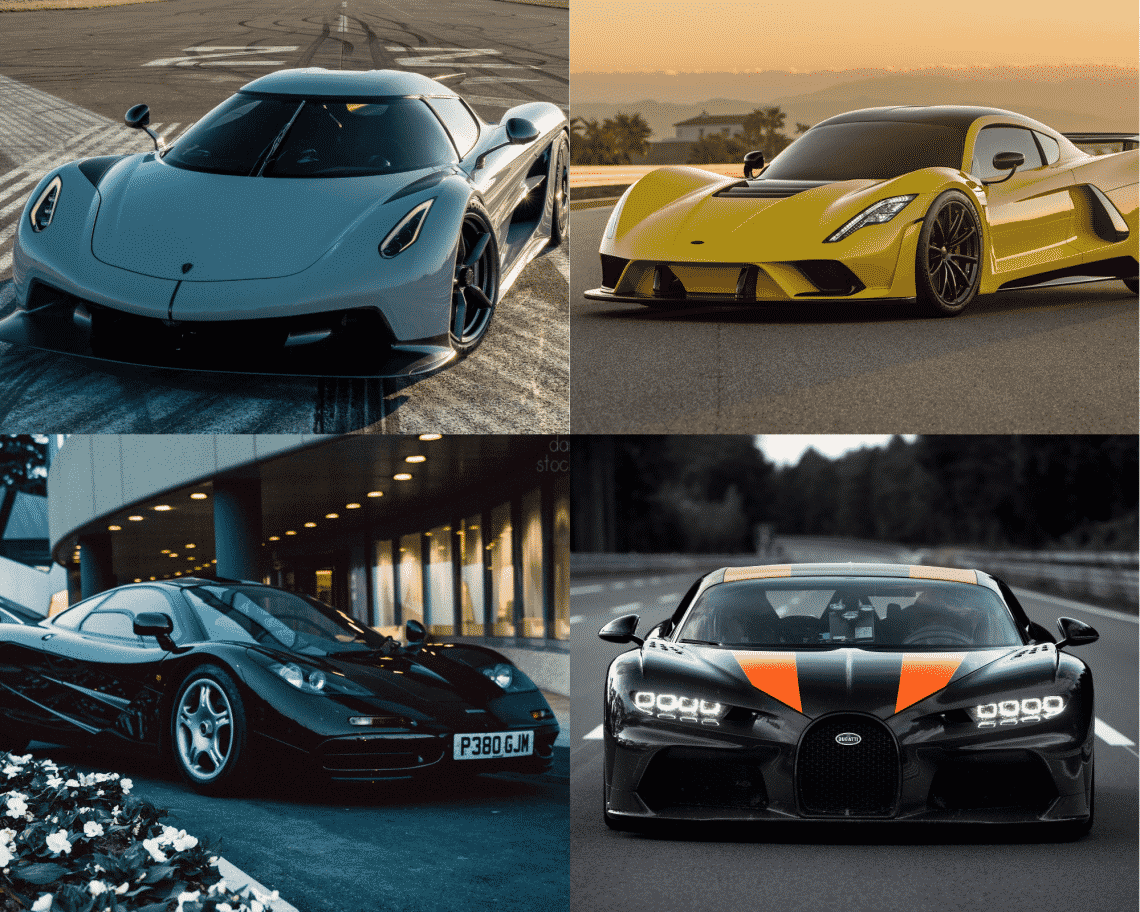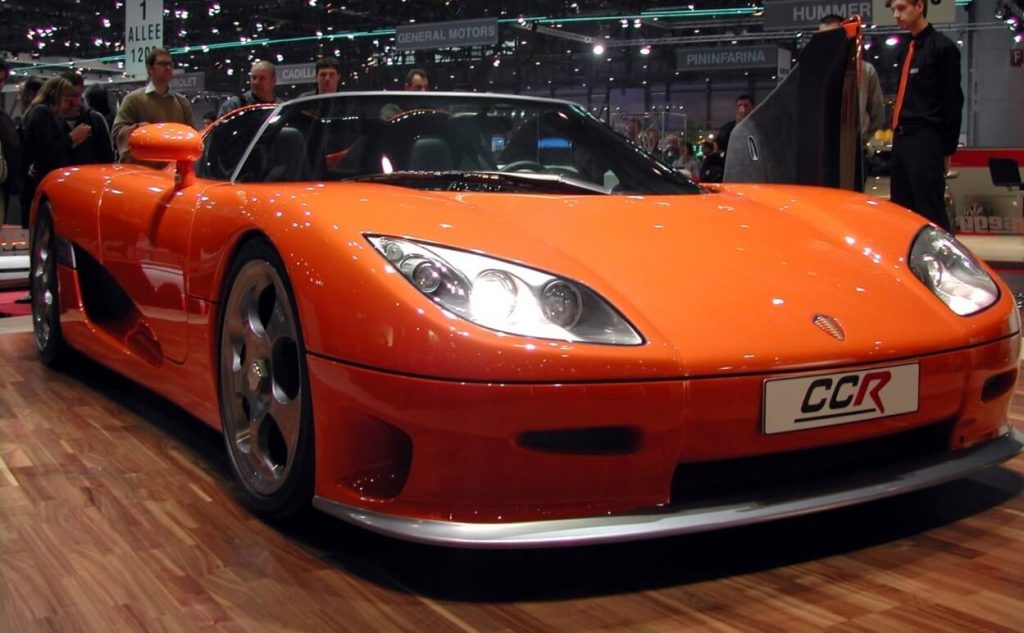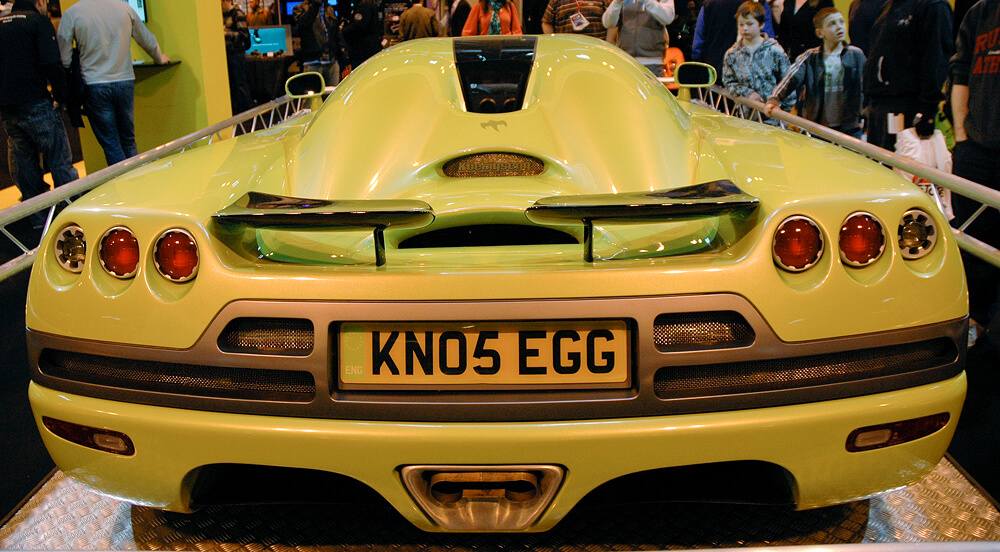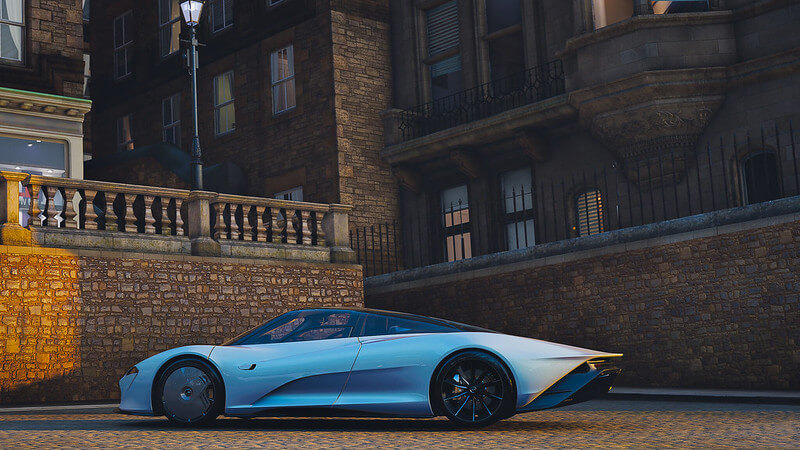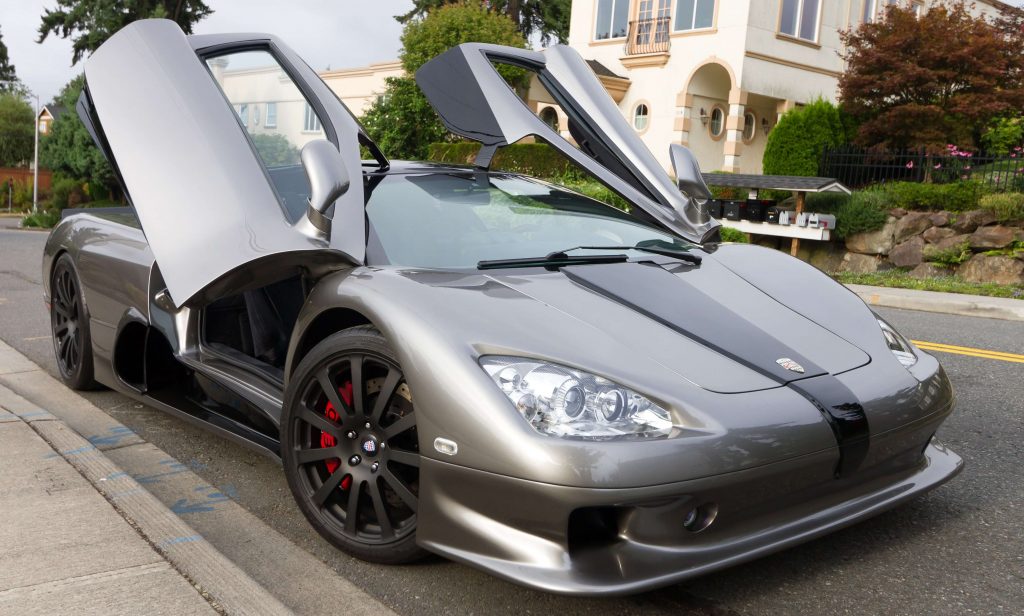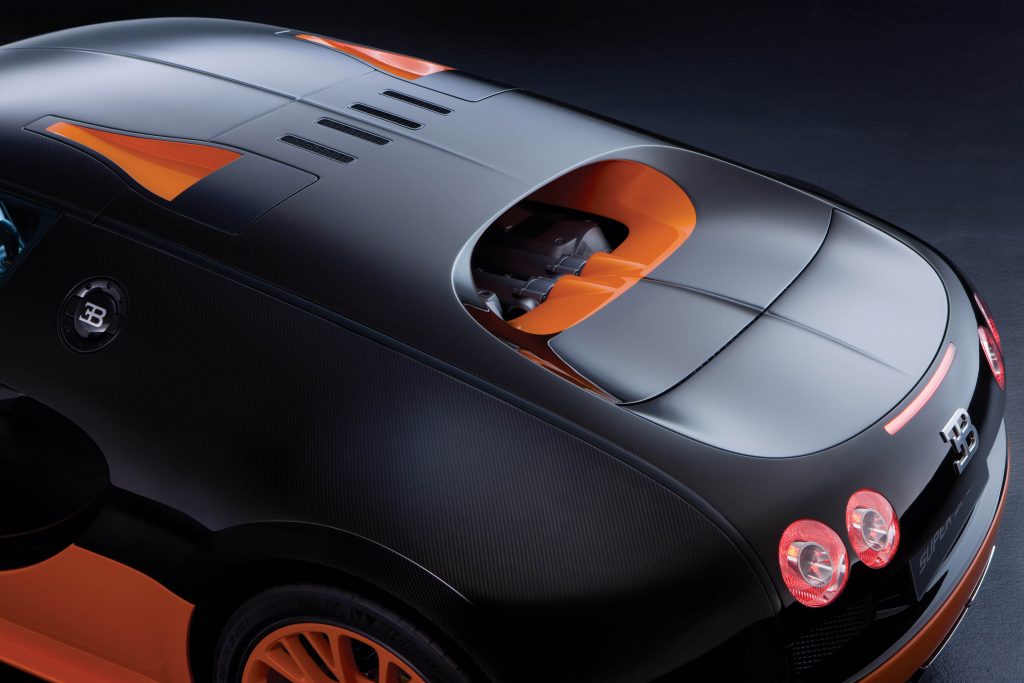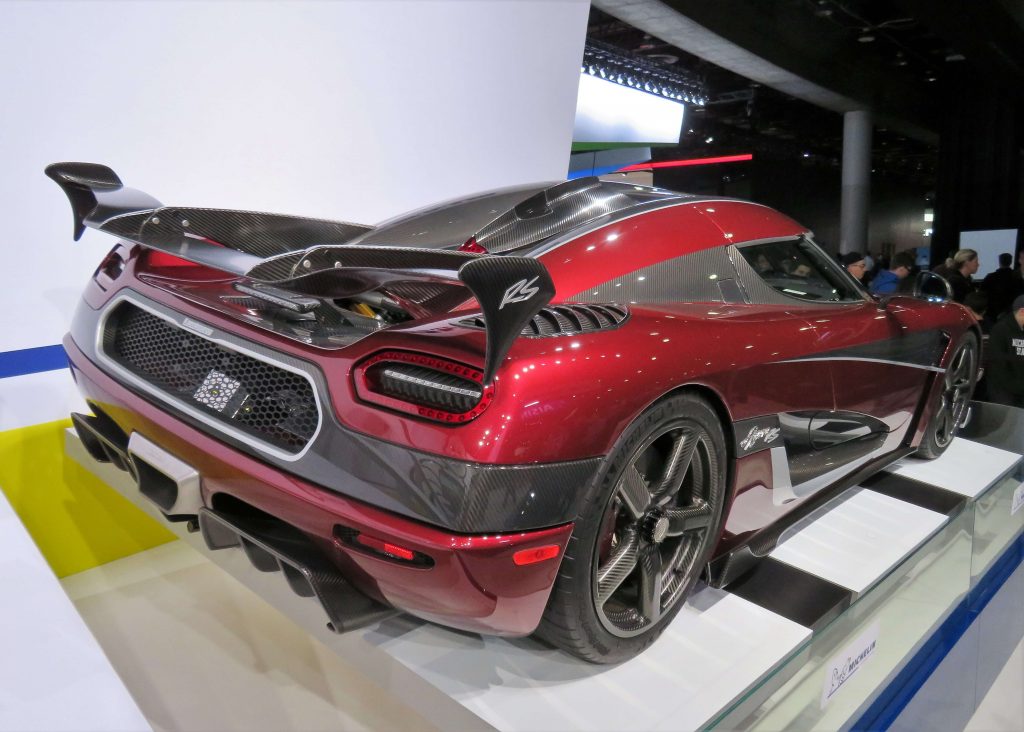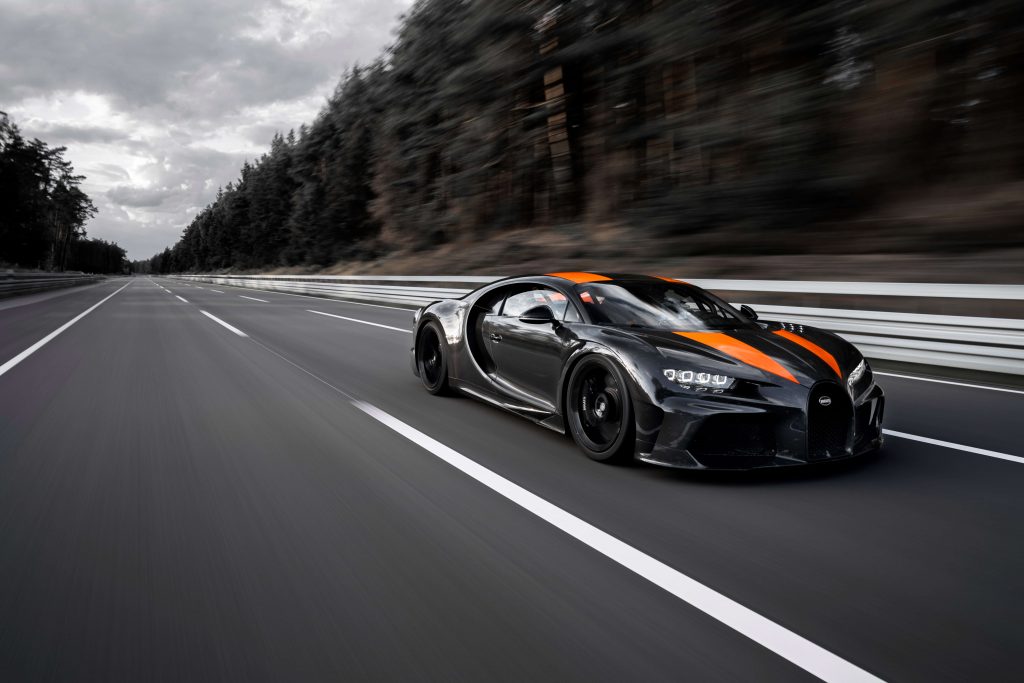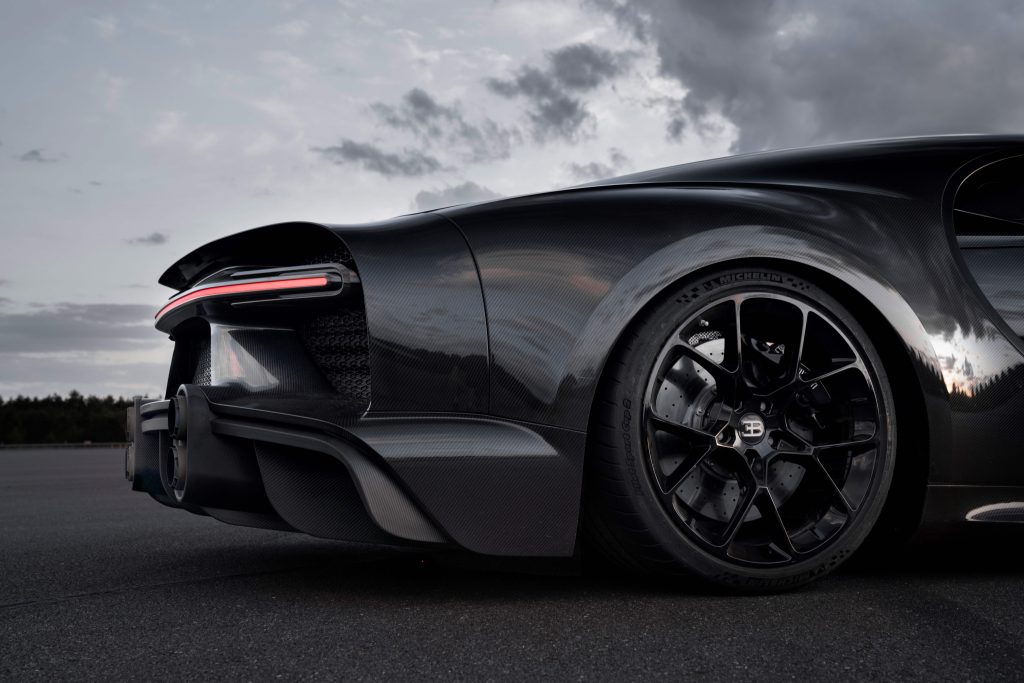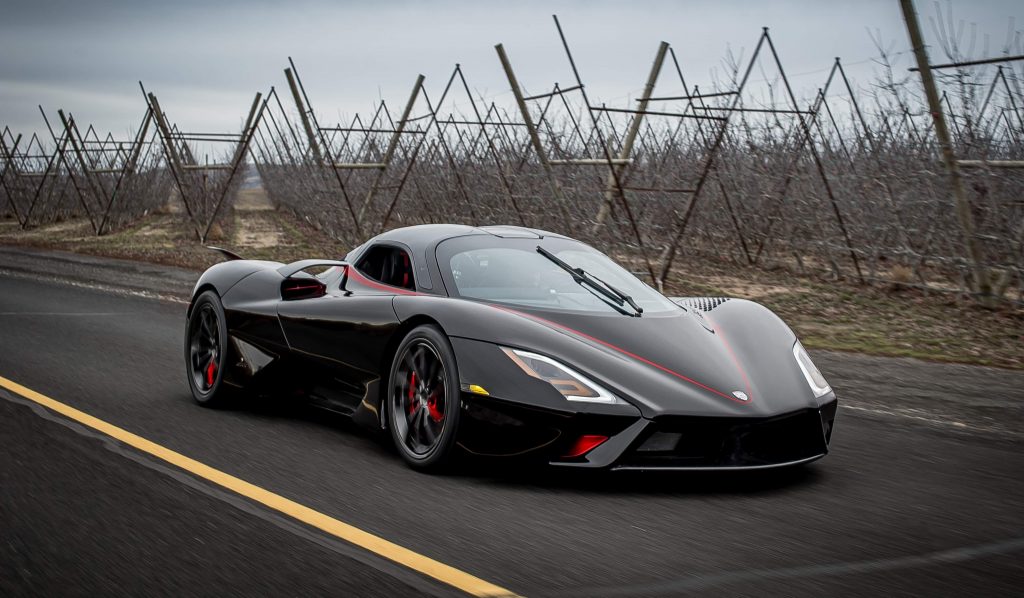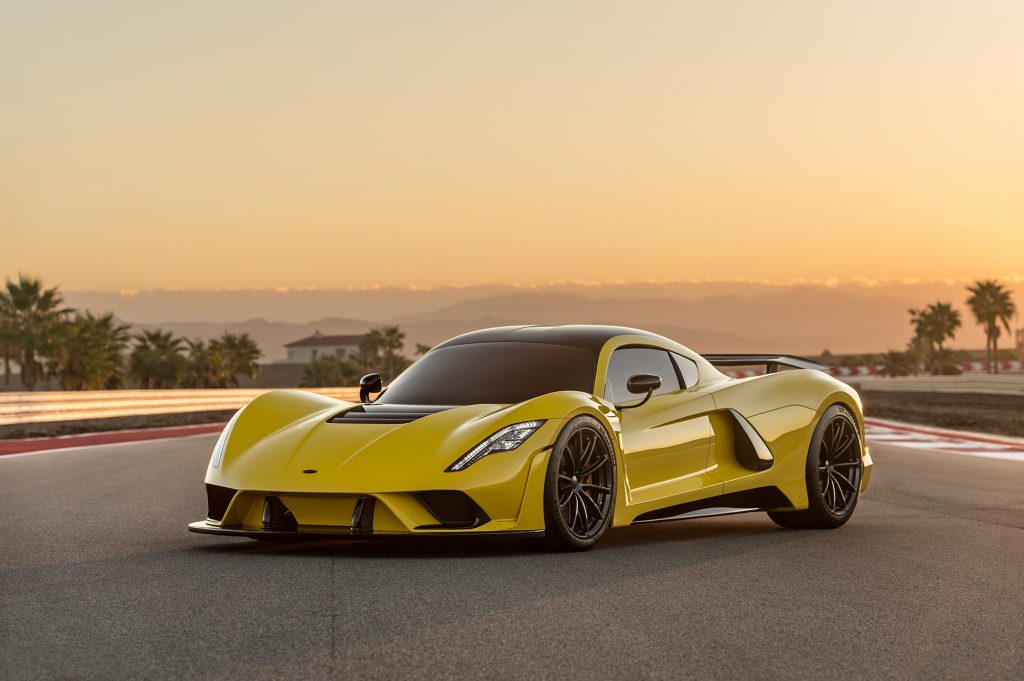The quest for ultimate top speed has been a long hard and still ongoing battle in the supercar industry. For the last two decades, manufacturers have continuously challenged each other to produce the fastest most powerful cars, built to slip through the wind and achieve ludicrous speeds.
However bear in mind, that when I say the fastest cars they do not necessarily have the quickest acceleration times. Rather they have achieved the highest possible velocities recorded during organised speed tests.
This list does not include any floating claims made by various manufacturers over the world, like how their cars “theoretically can achieve such and such speeds”. If you can do it, you gotta prove it and these cars have done just that.
For the sake of spicing things up, I have also mentioned a couple of hypercars that could potentially usurp some contenders from this list.
Let’s begin, shall we?
Mclaren F1 – 240mph/386.24kmph
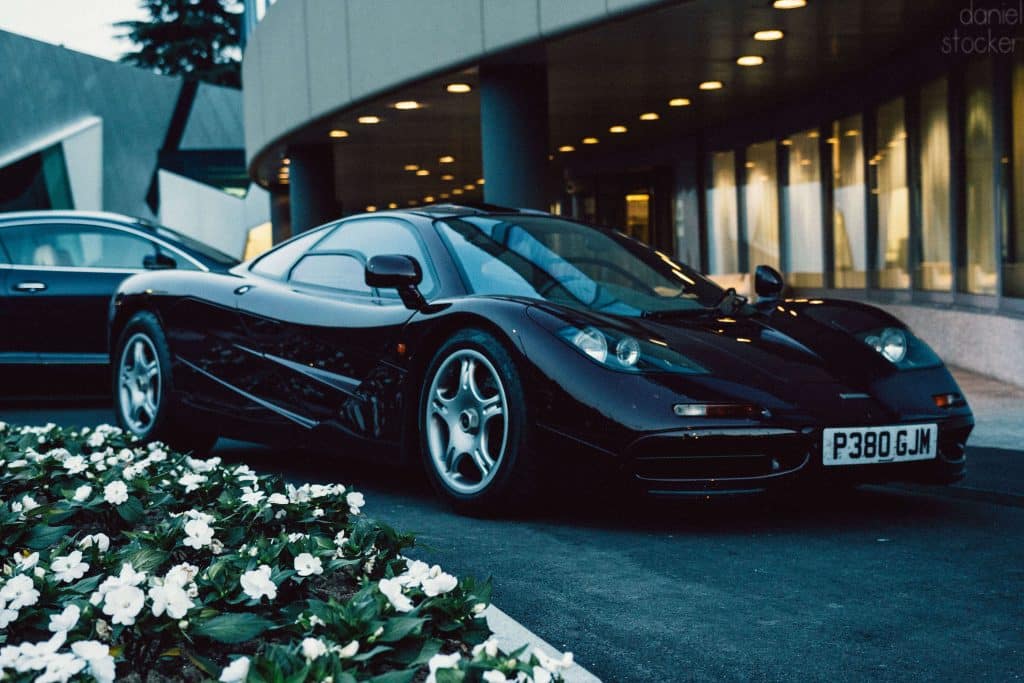
The Mclaren F1 is one of the most iconic supercars of all time. The brainchild of designer Gordan Murray, it was built in limited numbers by Mclaren from 1993 to 1998.
It was the first car to ever incorporate carbon fibre into its body structure, and it was incidentally also the first road car that Mclaren had ever built.
At the heart of the car, was a 6.1 litre naturally aspirated V12 BMW M engine, and get this – the engine bay was lined with 16g of gold (yes you read that right) to reflect the heat produced by that mad V12.
Oh, and did I mention that it had three seats? – one in the middle and two on either side. So you could take two friends at 300km/h plus speeds and frighten them to death.
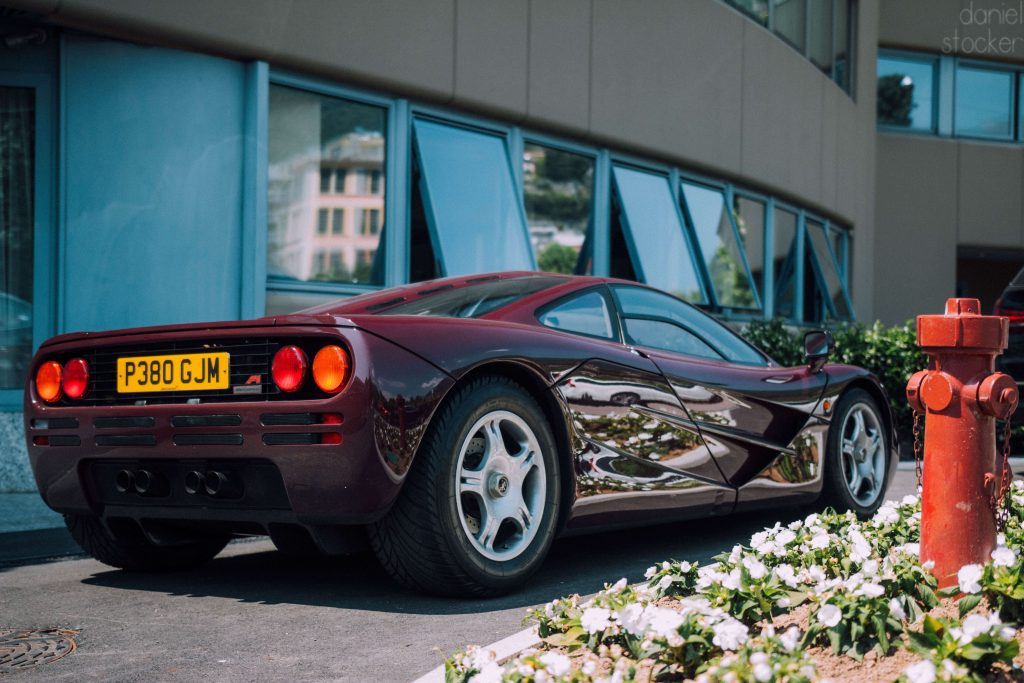
And if those facts aren’t enough to blow your mind then this probably should – that naturally aspirated V12 produced 627 hp and nearly 650 Nm of peak torque, which propelled the F1 to around 100km/h in just 3.2 sec.
Those numbers can put many modern supercars to shame.
In 1998, a racing driver by the name of Andy Wallace famously set a top speed of 240.1 mph, in the F1 at the Volkswagen owned Ehra-Lessien test track.
This made the Mclaren F1 the fastest road car at the time until it was dethroned by the Koenigsegg CCR in 2005 by a mere 1mph more.
However, it still holds the record for the fastest naturally aspirated supercar in the world today.
8. Koenigsegg CCR – 241.1mph/388 kmph
The Koenigsegg CCR was the successor to the CC8S and was only the second new supercar built by the Swedish makers.
Koenigsegg called it an ‘evolution to the CC8S’ as the CCR featured upgrades to the body design, a larger front splitter, a rear wing, larger brakes, new enlarged tires and more.
Those upgrades were necessary to handle the mind-blowing 806hp from the 4.7-litre, twin-supercharged V8 developed by Koenigsegg themselves. In a production run of 2 years, just 14 examples were built which makes this car incredibly rare today.
However, what the CCR is most famous for is the fact that it momentarily held the record for the fastest production car on the planet, beating the 8-year-old record held by the Mclaren F1.
Koenigsegg achieved the record during a high-speed test at the Nardo track in Italy, where the CCR achieved a top speed of 241.1mph mph or 388 km/h, besting the British supercar’s record by just 1mph.
It was robbed of that record just two months later by Bugatti’s Veyron prototype.
7. Mclaren Speedtail – 250mph/402.33kmph
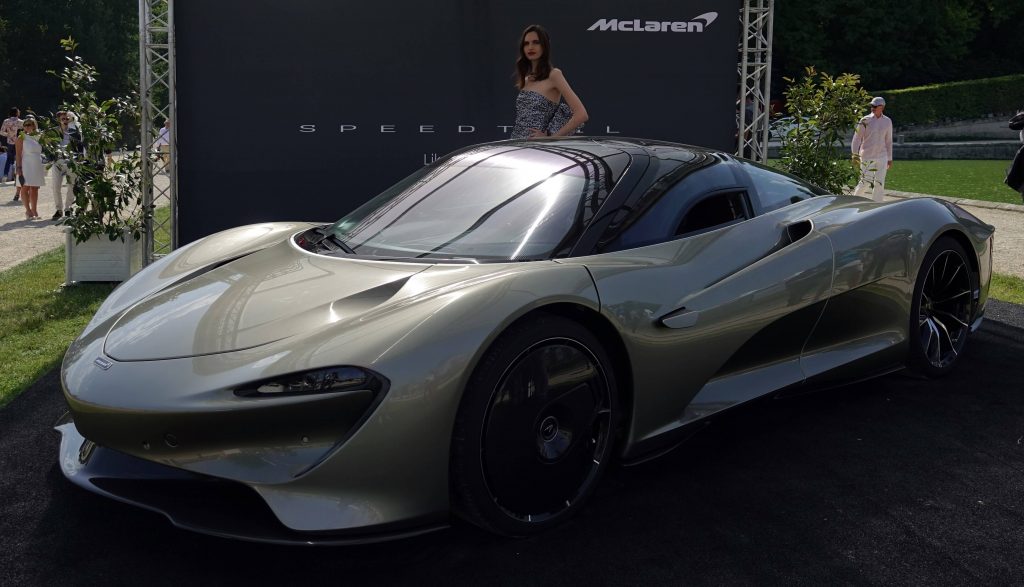
The spiritual successor to the Mclaren F1 arrived 25 years later in the form of this – The Mclaren Speedtail. Unveiled last year to the public, it is the third car of Mclaren’s Ultimate series, after the P1 and the Senna respectively.
The Speedtail has a few similarities with its older and much more iconic sibling. For starters, it features a three seat layout, with the driver’s seat positioned between the two passenger seats.
It also has one of the most aerodynamic designs of any hypercar ever, and every element of the body has been designed to offer the lowest drag possible.
For example, the car has no rear view mirrors, and Mclaren has instead replaced those with retractable cameras. The cameras feed the view to two screens placed on either side of the dash, and so one could view them just like conventional mirrors.
Most components of the car, as you’d expect, have been made from carbon fibre, to ensure the car is as light as it is aerodynamic.
The car weighs just 1430 kilograms dry, which is surprisingly 35 kilograms more than the P1, but pretty impressive when you take into consideration the extra seat and overall larger dimensions.
Unlike the original F1 however, the Speedtail does not have a naturally aspirated engine, nor does it have a petrol powertrain. Instead, Mclaren opted for a more efficient hybrid setup like you see on most modern hypercars these days.
Under the hood, it features the same engine from the brilliant 720S – a twin-turbocharged V8 that produces 746 hp and 590 pound-feet of torque. These power outputs are more than that of the 720S, but slightly less than the P1.
However, the Speedtail being a hybrid also has an electric motor that sings along with that turbocharged V8 to produce a healthy 1036bhp.
The outcome? The Mclaren Speedtail can hit 250mph with relative ease, and it did so recently at the Kennedy Space Centre, about 30 times in a row.
That makes its top speed 10mph more than the F1, and it is also quicker to 300km/h by a whopping 10 seconds, although 20 years later you’d expect that to be so.
It is the fastest car Mclaren has ever produced, and it also holds the title for the fastest production hybrid car in the world.
6. Bugatti Veyron 16.4
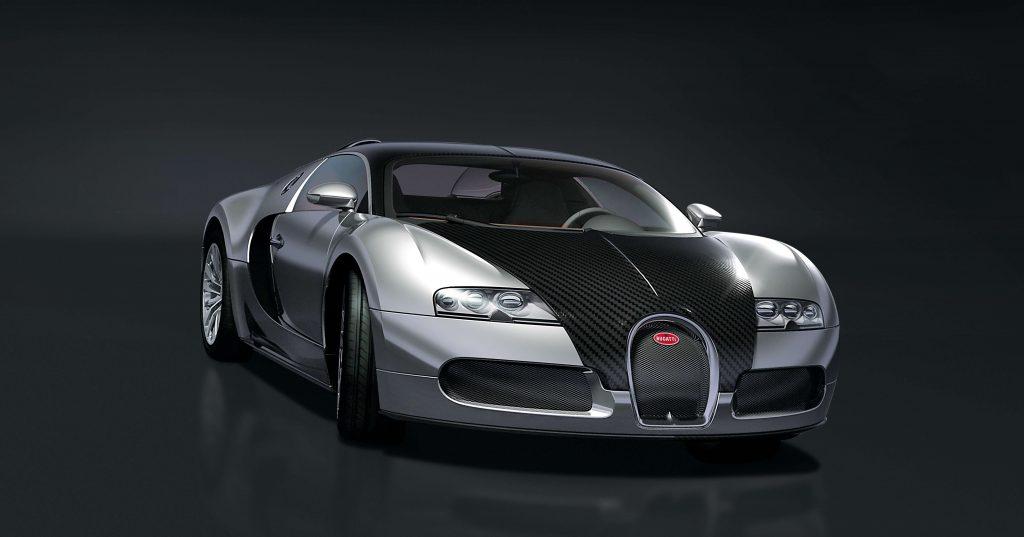
The Bugatti Veyron. That’s it. Enough said.
If you grew up during the 2000s chances are many of you have had posters of this car sprung up on your bedroom walls.
It might not have been the prettiest to look at with its bug-like proportions and massive wheels, but at the time it held the most prestigious place in the automotive industry.
It was the fastest most expensive car on the road, an engineering marvel, and that in itself was quite a statement.
However, the production of this car did not come without its hurdles. Bugatti is said to have conceived the idea during the early 2000s.
Initially however they could not meet the demands of the car that were expected by Ferdinand Piech, the then boss man at VW.
But towards 2005, they managed to produce a fully functional prototype that could realistically hit those aspirations which were – it should have 1000HP and could achieve a top speed of 400km/h.
To power the beast, Bugatti gave the Veyron an 8.0-litre quad-turbo W16 engine. It consisted of two 4.0 litre V8 engines joined at the crankcase to form one engine in a W configuration.
The engine made 1001hp and that power was sent to the wheels via a 7-speed automatic gearbox. This allowed the Veyron to go from zero to 100km/h in just 2.5 seconds, which is seriously quick by even today’s standards.
And so to make a statement, Bugatti took the Veyron to their Ehra-Lessien test track to show the world just how fast their car was.
The Veyron was put into a “Top Speed” mode which was activated by inserting a special key.
The car then drops abruptly to a ground clearance of just 6.5cm, the spoiler retracts, and the front diffuser shuts close. This allowed the Veyron to hit a record-breaking speed of 253.8mph, beating the 2-month-old record of the Koenigsegg CCR in spectacular fashion.
5. SSC Ultimate Aero TT – 256.1mph/412.2kmph
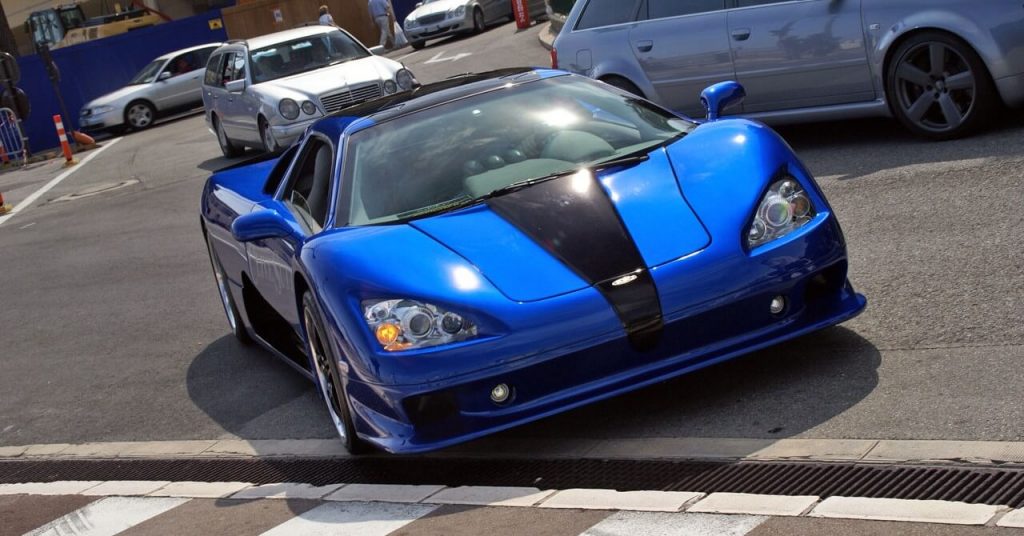
Now here’s one you might have not heard of, but it’s the car that took the fight to the Veyron two years later and beat it. Albeit it was a short-lived victory because Bugatti soon came out with the Super Sport version of the Veyron that regained the title.
SSC – an acronym for Shelby Supercars now known as SSC North America – was a performance car manufacturer founded by Jarod Shelby.
And no it does not have any relation to the famous Caroll Shelby you probably know of, but the two Americans had the same dream.
The Ultimate Aero TT was the final version of three cars made by SSC from 2004-2013. The first of those was the prototype Aero version. It was followed by the Ultimate Aero which made its intentions pretty clear by the name itself.
It made use of a 6.4-litre V8 engine taken from a Corvette C5R fitted with a supercharger which allowed it to produce around 1046bhp, and 821lb-ft of torque.
Now for a car to be as fast as possible, it needs to be highly efficient as well. SSC knew this, and to break the Veyron’s record, it needed to extract the most from that V8.
It did this by ditching the supercharger used in the previous engine and going for the more efficient alternative – twin turbos (hence the TT). Lo and behold we have the Ultimate Aero TT.
Now the engine produced 1183 bhp, which gave it a 200 hp advantage over the Veyron whilst also being lighter with a kerb weight of just 1247 kgs.
SSC claimed that the Ultimate Aero TT could achieve a theoretical top speed of around 270mph which would make it 20 mph faster than the Veyron.
However, when SSC finally conducted their high-speed run, on a closed stretch of public road in Washington, the car only managed to hit around 256.8mph. Nevertheless, it was still a new production car record and it had truly beaten the Veyron.
You’d think SSC would stop there, but they didn’t. They went on and replaced the Corvette engine with one they had built themselves and they cranked the power up to 1287bhp hoping to hit that elusive 270mph target. But alas they only managed to go 1mph faster than their previous record.
4. Bugatti Veyron Super Sport – 267.85mph/431.07kmph
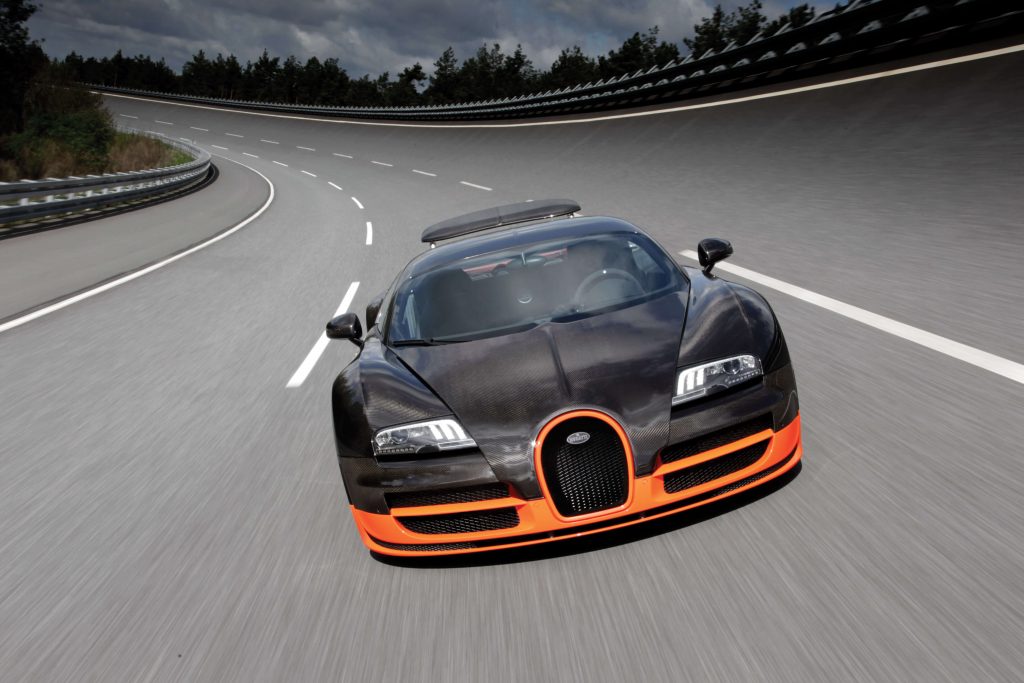
The Bugatti Veyron Super Sport might seem to be an extra spiced up version of the regular Veyron on the outside, but there’s much more than what meets the eye.
One could say that the Super Sport is a completely different animal, and they wouldn’t be wrong in saying so. That’s because Bugatti took all the Veyron’s strong points and made them better.
For starters, the engine now produced a whopping 1200hp and 1500Nm of torque courtesy of the 4 turbochargers which were 10% larger than the previous model. Fuel pressure had also been increased with the addition of 2 more fuel pumps compared to the ‘normal’ Veyron’s 2.
Additionally, the Super Sport’s outer body panels were now made from carbon fibre compared to the previous car’s aluminium body. This helped the new car shed around 50 kilograms.
Bugatti also refined the aerodynamics of the car by restyling the front bumper. They added new scoops under the headlamps to cool the breaks among other tweaks. The chassis was also re-engineered to deal with the extra power and torque that the car was now producing.
So how much of an improvement was the Super Sport over its predecessor?
Well to prove just that Bugatti recorded a top speed of 267.85 mph, at the Ehra Lessien track with Bugatti test driver Pierre Henri Raphanel at the helm.
The record books were once again rewritten, and the Veyron reclaimed its throne at the top of the speed charts.
3. Hennessey Venom GT – 270.4mph/435.16kmph
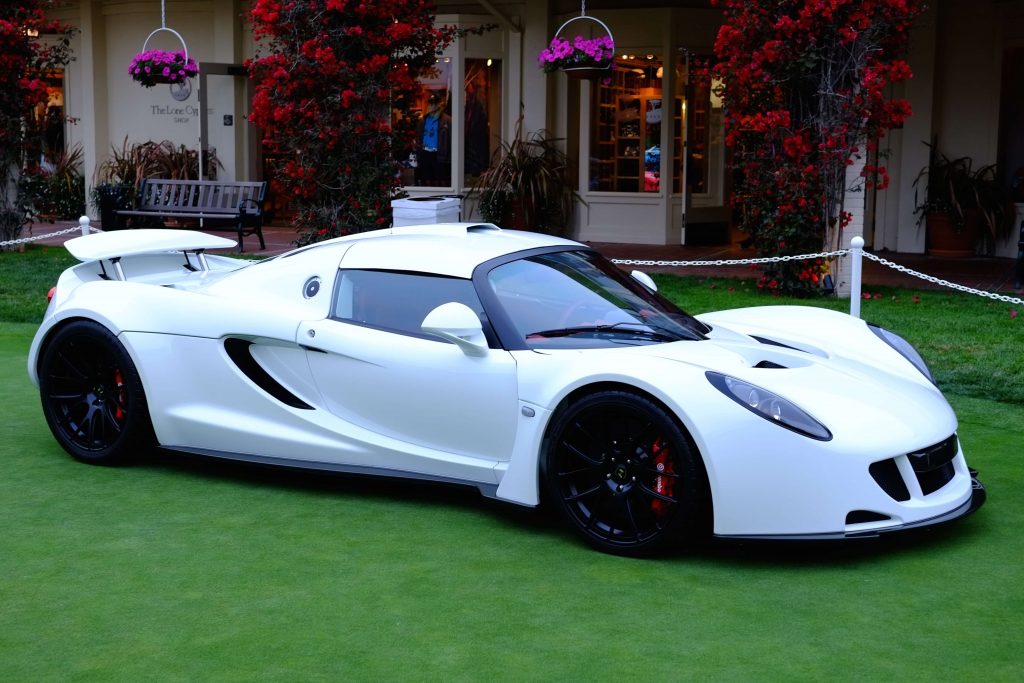
This next one is muddled in a bit of controversy. Hennessey Performance Engineering is a tuning company based in Texas, USA. Their job description is taking normal production cars like Ferraris, Lotuses, and turning them into monsters.
That’s why you probably might recognise the car above to be familiar because it is essentially a souped-up Lotus Exige.
The idea came to founder John Hennessey when his Hennessey Venom 1000 Twin Turbo Viper took the title of ROAD & TRACK “Speed Kings”, beating the likes of the Bugatti Veyron and the Lamborghini Murcielago.
It achieved a 0-200mph stint in an astonishing 20.3 seconds that showed promise of the 8.55-litre twin-turbo V10 under the hood of a regular Dodge Viper. John felt he could get more out of the car, but it needed to be lighter than 3000 pounds and with 1000+ horsepower.
Enter the Lotus Exige. A car that was very well suited to Hennessey’s needs. Work began and designs and plans were proposed to build the new Venom GT.
The result of that massive overhaul was almost an entirely brand new car. Interestingly, only the windshield, interior trim, air-con and doors were inherited from the stock car.
Hennessey gave the Venom a twin-turbo V8 Corvette Engine that produced a mad 1244hp. That power was sent to the rear wheels via a 6-speed manual transmission taken from the Ford GT.
All of this allowed the Venom GT to go from zero to 60mph in just a mere 2.7 seconds, and it holds the Guinness World record for the 0-300kmph run with a time of 13.63 sec.
Now, this article isn’t about those acceleration times but about the top speed of these hypercars. The Venom GT achieved a top speed of 270mph at the Kennedy Space Centre in Florida in February of 2014. Now by that speed, it had well and truly beaten the Bugatti Veyron Super Sport.
However, for a speed record to qualify in the Guinness World Book of Records, the car has to do two runs in opposite directions. Hennessey was not allowed to do this at the Kennedy Space Centre.
Additionally, there should be at least 30 production models of the car to qualify, and only 13 versions of the Venom GT are in existence.
And so it didn’t dethrone the Veyron for that top position in the record books, but it had proven to be faster and so it takes the third spot in this list.
2. Koenigsegg Agera RS – 277.87 mph/447.19 kmph
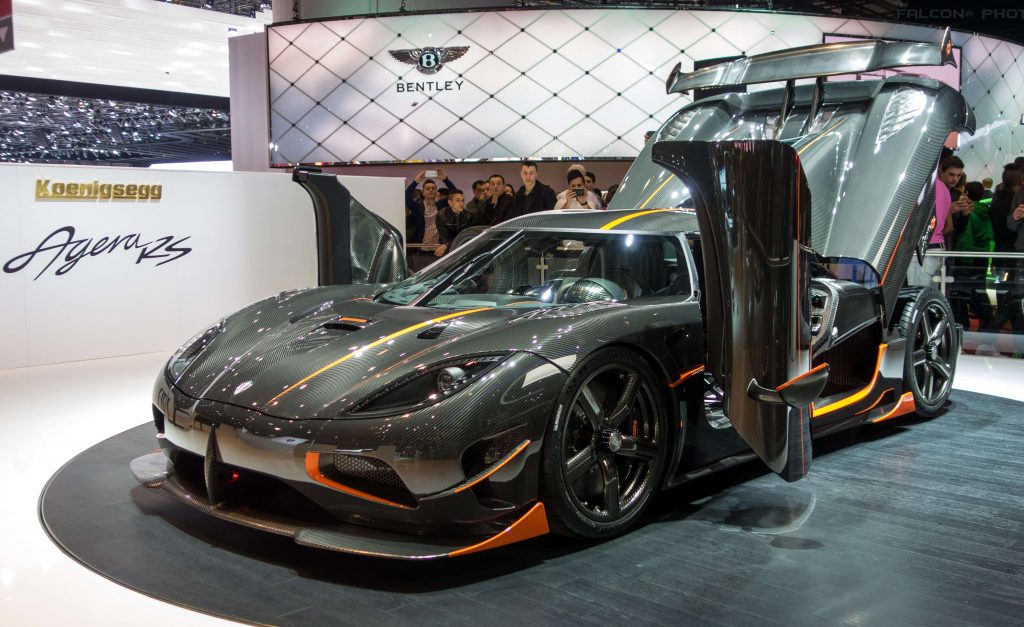
Koenigsegg is one of the youngest performance car manufacturers out there, having been established in 1994 by the then 22 year old Christian von Koenigsegg.
Yet the cars they churn out from Angelhom, Sweden slap every other manufacturer in the face with their extreme performance not to mention, incredible innovation.
Now the Agera RS is the 4th model of the Agera series which began with the base Agera in 2011. That car was then followed by the Agera S, Agera R and the Agera One:1.
All of these models were produced in limited numbers, the most powerful being the Agera One:1 which was limited to just 7 examples.
The Agera RS was the next car after the One:1 and as Christian says, it offered a more friendly and accessible experience than its predecessor.
It had slightly less power than the One:1 and featured the same twin-turbocharged 5.0-litre V8 that now produced 1,160hp which to be honest is still a ridiculous amount of power.
That coupled with its extremely light carbon fibre body developed in-house by Koenigsegg themselves made the Agera RS one of the fastest cars Koenigsegg has ever built.
Little did Koenigsegg know how fast, because, in November of 2017, Koenigsegg made history using a customer car piloted by Koenigsegg test driver Niklas Lilja.
This particular car belonged to a customer who had opted for the optional 1 MW package which simply turned everything up to 11 (if that was even possible). The engine now produced a colossal 1,360 hp and 1,011 pound-feet of torque.
On that day the Koenigsegg Agera broke multiple world records including the 0-400-0 time of the Bugatti Chiron by 5.5 seconds! It averaged a speed of 277.8 mph on an 11-mile strip of closed road in Nevada and set the following 5 new records –
- Highest top speed for a production vehicle 277.87 mph (447.19 km/h)
- 0-400-0 km/h 33.29 seconds
- Flying kilometre on a public road 276.9 mph (445.63 km/h)
- Flying mile on a public road 276.36 mph (444.76 km/h)
- Highest speed achieved on a public road 284.55 mph (457.94 km/h)
1. Bugatti Chiron Super Sport 300+ – 304.77mph/409.48 kmph
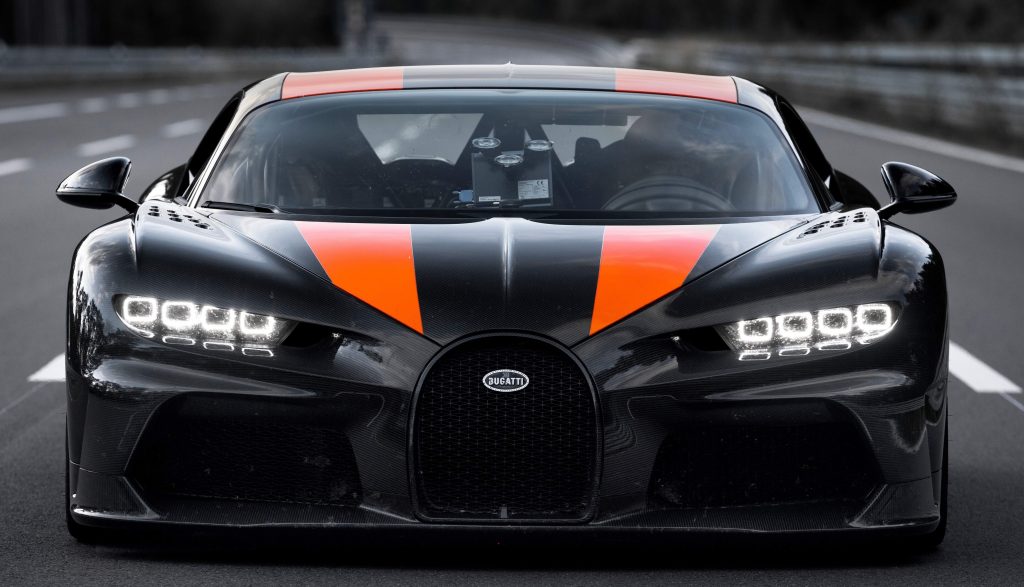
And finally, we come to yet another Bugatti, the third on this list, and by far the fastest and most powerful car as well. Now it is well known that Bugatti and Koenigsegg have been trading a few blows when it comes to this top spot.
It started when Koenigsegg released the CCR, set the record, only then to be beaten by the Bugatti Veyron two months later.
Then a few years ago Koenigsegg achieved the feat once again with their Agera RS and even broke the 0-400-0 time of the Chiron in the process. Well, that second challenge seemed to have dented Bugatti’s pride a bit.
And so to give a fitting reply Bugatti made this – The Chiron Super Sport 300+ – a car that not only was able to beat the previous contender, but also the first car to hit the 300mph barrier.
This was a huge achievement for Bugatti because many manufacturers had claimed that their cars could hit those speeds, but none of them ever proved it on a track.
Reaching speeds of 300mph or 490km/h is extremely difficult as a lot of other forces come into play and the drag acting on the car increases tremendously.
At the same time, the tires have to deal with enormous pressure and so need to be developed to withstand the extreme conditions or else they could blow up.
To build this Chiron on steroids, Bugatti took the services of Italian race car manufacturer Dallara, who aided them in developing the Chiron’s body kit and aerodynamics. The new car is 25cm longer and features a much more aggressive look on the front partly due to the revised bumper.
The car also sits much lower now, to reduce drag, and at the rear, the tail has been increased in length to prevent turbulence and allow the air to bleed over more effectively.
At the heart is a tweaked version of the same 8.0-litre, quad-turbo W16 unit (nicknamed Thor), that delivers a massive 1,578bhp. Bugatti also worked in conjunction with Michellin to produce special Pilot Cup 2 tires that were X-rayed before the run to check for defects.
The standard alloys were also replaced with lightweight pieces crafted from magnesium to further reduce weight.
And so after checking all these boxes, Bugatti left the beast to the well seasoned race driver, and Le Mans winner, Andy Wallace. Wallace had also previously driven the Mclaren F1 and the older Jaguar XJ220 to top speed records.
But even he admitted that driving a 300 mph plus speeds was a different ball game altogether and would require immense concentration and skill.
Nevertheless, he fearlessly drove the car around the Ehra-Lessien track and racked up another world record to add to his tally.
The souped-up Chiron managed to crack a mind-blowing 304.77mph or 409.48 km/h which is the speed of many planes. In fact, Wallace claimed that it could go even faster if he didn’t lift off due to the track limitations and that is absolutely crazy.
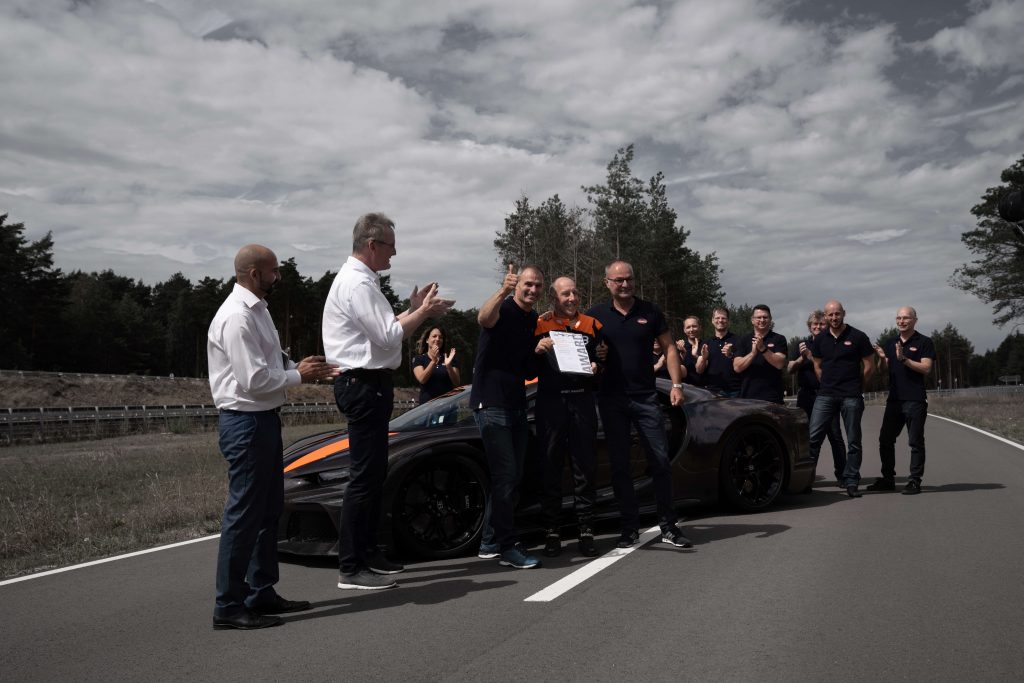
A week after the test, it was confirmed that Bugatti would be making a production version of that test mule – the Super Sport 300+. The car would be limited to 30 examples only, just like its older sibling the Veyron Super Sport.
Bugatti also publicly announced that this car would be the fastest they ever build and that they won’t be chasing any speed records in the future.
Each of those Chirons was sold at an eye-watering 5.2 million dollars each, but I guess that’s what you pay to own the fastest car in the world.
The Challengers
SSC Tuatara
The successor to the Ultimate Aero TT has been long in the making. Named the Tuatara, SSC has been working on this car since 2011 when they first released a concept to the public.
Featuring a 5.9-litre V8 engine, which produces a whopping 1705bhp on E85 fuel, SSC claims it can hit speeds over 300mph. Well, we’re waiting to see that happen, SSC.
Koenigsegg Jesko Absolute
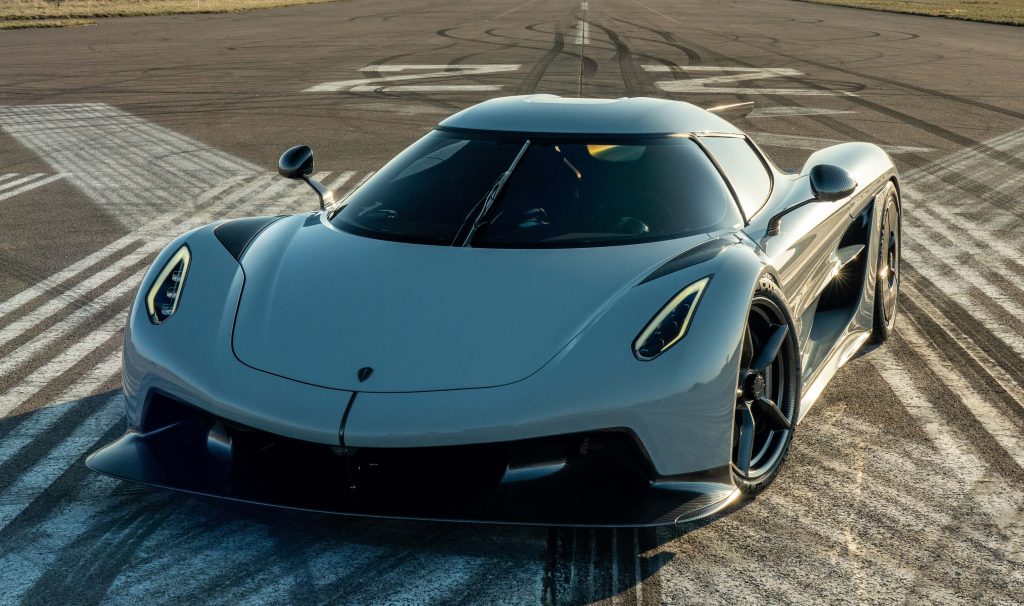
Koenigsegg released the Jesko about a year ago as the successor to the Agera series. And now a year later, Koenigsegg decided it could go even further, and the result is this – The Jesko Absolut.
Essentially it is the same car with the same heavily modified 5.0 litre V8 that produces upwards of 1600bhp. But this particular version ditched the rear wing all together and added a few other aero elements in a bid to minimize drag.
Koenigsegg claims it can achieve 330mph, which is just too difficult to comprehend, but then again this is Koenigsegg and over the years they’ve developed a reputation for achieving the impossible, so we’ll just have to wait and see.
Hennessey Venom F5
Ahhh this list of possible challengers only gets better.
The Venom F5 like the cars above carries the torch forward from its predecessor – the Venom GT. And just like the cars above it has a mind numbing spec sheet.Under the hood, Hennessey has planted a 6.6-litre twin-turbo V8, and it has been named “Fury”.
Why you ask? Well, that’s because it produces 1,817bhp and 1913 pound-feet of torque. Yeah, let that sink in.
Hennessey claims it can hit 60mph or 100km/h in under 2 seconds and can theoretically hit 500km/h or 310mph.
This 300mph+ hypercar battle is one of the closest there has ever been, and might probably be the last.
I for one simply can’t wait to see these cars tear the record books apart.


